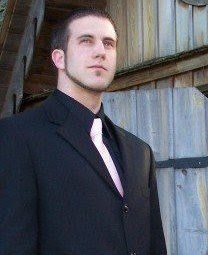In the Know #2
January 6, 2008
Today is Epiphany, the celebration of the visit of the Magi to the Christ-child. Also known as Theophany to some Christians in celebration of the Baptism of Jesus.
Word of the Day from Dictionary.com:
friable \FRY-uh-buhl\, adjective:
Easily crumbled, pulverized, or reduced to powder.
Today in history, according to Wikipedia: 1838 - Samuel Morse first successfully tests the electrical telegraph.
1838 - Samuel Morse first successfully tests the electrical telegraph.
1912 - New Mexico is admitted as the 47th US state.
1929 - Mother Theresa (pictured) arrives in Calcutta to begin her work amongst India's poorest and diseased people.
1941 - President Franklin Delano Roosevelt delivers his Four Freedoms Speech in the State of the Union address.
Today's Famous Births: 1412 - Joan or Arc, Roman Catholic saint and national heroine of France
1412 - Joan or Arc, Roman Catholic saint and national heroine of France
1878 - Carl Sandburg (pictured), American poet and historian
1883 - Kahlil Gibran, Lebanese author
1926 - Kim Dae-jung, President of South Korea and Nobel laureate
1937 - Lou Holtz, American football coach and broadcaster
1955 - Rowan Atkinson, English comedian and actor, Mr. Bean
1968 - John Singleton, American film director and producer; Hustle & Flow, Four Brothers, Higher Learning, Boyz n the Hood
Trivia:
Today's category - Vexillology, the study of flags
~ Red is the most popular color used in flags of the world, followed by white.
~ The largest flag ever flown was hoisted by a helicopter over Abu Dhabi, UAE, on December 2, 2007.
~ Flags based on the French flag copy its proportions of 2:3, German flags are 3:5, U.S. flags are 10:19, and Russian, Commonwealth of Nations, and communist flags use 1:2.
~ On June 14, 1777, Congress adopted a resolution calling for a flag with thirteen stripes, alternating red and white, and with a blue canton or "union", with thirteen white stars. The resolution defined the significance of the colors: "White signifies Purity and Innocence; Red, Hardiness and Valor; Blue, Vigilance, Perseverance and Justice."
I always wondered...
...how time is measured... The science of time measurement has advanced greatly through the years, from sundials and candles to pendulums and quartz. But in recent times, time measurement has become much more precise. An atomic clock relies on the resonant frequency of Cesium-133. The current SI standard for the passage of one second is the time it takes for a Cesium atom to cycle through 9,192,631,770 energy changes - a lot more complicated than the ticking second-hand on your wristwatch.
The science of time measurement has advanced greatly through the years, from sundials and candles to pendulums and quartz. But in recent times, time measurement has become much more precise. An atomic clock relies on the resonant frequency of Cesium-133. The current SI standard for the passage of one second is the time it takes for a Cesium atom to cycle through 9,192,631,770 energy changes - a lot more complicated than the ticking second-hand on your wristwatch.


No comments:
Post a Comment